OnePlus Announces OnePlus 9R, OnePlus 9 & OnePlus 9 Pro
by Andrei Frumusanu on March 23, 2021 10:00 AM EST- Posted in
- Mobile
- Smartphones
- OnePlus
- Snapdragon 888
- OnePlus 9
- OnePlus 9 Pro
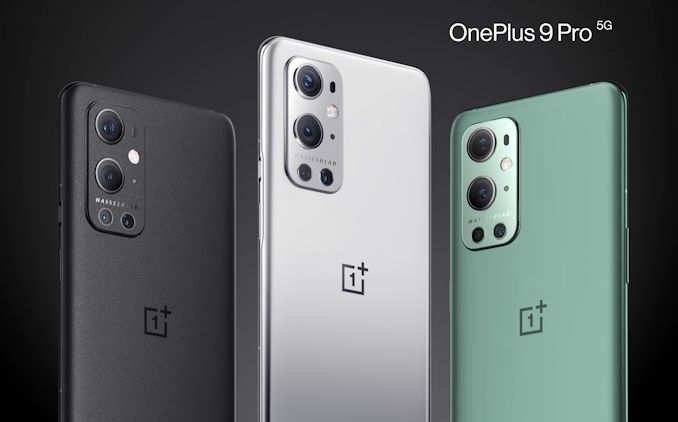
Today OnePlus is launching their new 2021 line-up of flagship devices, the new OnePlus 9 series. This year, the company is refining its formula that it had employed in 2020 following the successful OnePlus 8 series, doubling down on aspects that make the company’s devices no longer value alternatives to the competition, but outright amongst the best devices you can get on the market.
OnePlus is launching three devices today, the regular new OnePlus 9, the OnePlus 9 Pro, and a more budget oriented refresh in the form of the OnePlus 9R. The OnePlus 9 Pro follows in the footsteps of the 8 Pro last year in that it’s a no-compromise device, and this year OnePlus is again equipping the phone with the best possible display hardware that’s available on the market. Also, a change in the usual model line-up is the fact that both the OnePlus 9 and OnePlus 9 Pro feature the same two new-generation camera modules and sensors, with OnePlus promising great advances in photography and picture quality in collaboration with Hasselblad – an area in the last few generations which was admittedly a weak-point for the company in the last few generations.
| OnePlus 9 Series | |||
| OnePlus 9R | OnePlus 9 | OnePlus 9 Pro | |
| SoC | Snapdragon 870 1x Cortex A77 @ 3.2GHz 3x Cortex A77 @ 2.42GHz 4x Cortex A55 @ 1.80GHz Adreno 650 @ 670MHz |
Qualcomm Snapdragon 888 1x Cortex-X1 @ 2.84GHz 1x1024KB pL2 3x Cortex-A78 @ 2.42GHz 3x512KB pL2 4x Cortex-A55 @ 1.80GHz 4x128KB pL2 4MB sL3 Adreno 660 @ 840MHz |
|
| Display | 6.55-inch FHD+ 2400 x 1080 (20:9) 120Hz Refresh Rate |
6.7-inch QHD+ 3216 x 1440 (20.1:9) 120Hz Refresh Rate LTPO HW VRR |
|
| SAMOLED HDR10+ |
|||
| Dimensions | 161.0 x 74.1 x 8.4 mm 189g |
160.0 x 74.2 x 8.7 mm 192g |
163.2 x 73.6 x 8.7 mm 197g |
| RAM | 8/12GB LPDDR4X | 8/12GB LPDDR5 | |
| NAND Storage |
128/256 GB UFS 3.1 | 128/256 GB UFS 3.1 | |
| Battery | 4500mAh (17.41Wh) typ. | ||
| 65W Warp-Charge (Proprietary) 45W USB-PD |
|||
| - | 15 Qi Wireless |
30W Wireless Fast Charging (only via proprietary charger) 5W Qi Wireless |
|
| Front Camera | 16MP Sony IMX471 f/2.4 |
||
| Primary Rear Camera | 48MP 0.8µm 1/2" IMX586 (12MP 1.6µm 2x2 binning) f/1.7 w/ OIS |
48MP 1.12µm 1/1.4" IMX689 (12MP 2.24µm 2x2 binning) f/1.8 w/ OIS 23mm equivalent |
48MP 1.12µm 1/1.4" IMX789 (12MP 2.24µm 2x2 binning) f/1.8 w/ OIS 23mm equivalent |
| Secondary Rear Camera |
Ultra-Wide-Angle 16MP IMX481 123° FoV |
Ultra-Wide-Angle 50MP 1.0µm 1/1.56" IMX766 Rectilinear Free-Form Optics f/2.2 14mm equivalent |
|
| Tertiary Rear Camera |
5MP Macro | - | 3.3x Telephoto 8MP OV08a10 w/ OIS |
| Extra Camera |
2MP Monochrome | 2MP Monochrome | 2MP Monochrome |
| 4G / 5G Modem |
X55 (Discrete) (LTE Category 24/22) DL = 2500 Mbps 7x20MHz CA, 1024-QAM UL = 316 Mbps 3x20MHz CA, 256-QAM |
X60 integrated (LTE Category 24/22) DL = 2500 Mbps 7x20MHz CA, 1024-QAM UL = 316 Mbps 3x20MHz CA, 256-QAM (5G NR Sub-6 + mmWave) DL = 7500 Mbps UL = 3000 Mbps |
|
| SIM Size | NanoSIM + NanoSIM | ||
| Wireless | 802.11a/b/g/n/ac/ax BT 5.2 LE, NFC, GPS/Glonass/Galileo/BDS |
||
| Connectivity | USB Type-C no 3.5mm jack |
||
| Special Features | On-screen fingerprint sensor, Stereo Speakers |
On-screen fingerprint sensor, Stereo Speakers |
|
| Launch OS | Android 11 w/ Oxygen OS | ||
| Launch Prices | 8+128GB: ₹39 999 12+256GB: ₹43,999 |
8+128GB: $729 / £629 / 699€ 12+256GB: £729 / 799€ |
8+128GB: $1069 / £829 / 899€ 12+256GB: £929 / 999€ |
Starting off with the new OnePlus 9 and 9 Pro, both devices now feature the new Snapdragon 888 SoC from Qualcomm. We’ve extensively reviewed the chip in our coverage of the S21 Ultra, and whilst generationally it might not be as great as we’ve been used to in the last few years, it’s an improvement and will likely have no issues in giving you excellent device experiences in these new smartphone models.
The lower-end model OnePlus 9R uses Qualcomm’s new higher-binned Snapdragon 865 variant called the Snapdragon 870 – essentially a faster variant of the 865+ with main CPU clocks of up to 3.2GHz. It’s to be noted that the actual performance differences between this chip and the newer Snapdragon 888 in the 9 and 9 Pro should be rather small, so it’s definitely a valid way to create a more budget flagship device this year.
OnePlus keeps the DRAM and memory configurations similar this year with either 8 or 12GB of main memory, alongside 128 or 256GB storage options. The storage has been updated to a faster UFS 3.1 module.
The OnePlus 9 Pro: All the bells and whistles
We start off with the new OnePlus 9 Pro which is the star of today’s announcement. Following up the 8 Pro last year, OnePlus again integrates everything but the kitchen sink into the new high-tier flagship smartphone this year – however doesn’t quite go as far as to venture into the “Ultra” category of devices that have emerged with Samsung’s bigger flagship megalodons, and being followed by some other vendors.
At 163.2 x 73.6mm footprint, the OnePlus 9 Pro remains relatively mid-size by today’s standards, and is actually narrower than the 8 Pro by 0.8mm. Generally, I find this to be an important characteristic of the phone as the competition’s top-end devices keep getting bigger and heavier.
The phone’s design appears to follow closely the ergonomics of the regular OnePlus 8 last year, featuring rounded front display glass and back cover glass – however with the curvatures on both sides being more symmetrical to each other, compared to the more prominent front display curvature of the 8 Pro design. This is actually quite welcome and a big plus in my view as I had found the regular OnePlus 8 to be an extremely ergonomic device.
The star feature of the OnePlus 8 Pro is the new display – it’s still a 6.7” 3216 x 1440 resolution and 120Hz refresh rate display like the 8 Pro, however this year OnePlus has moved on to a newer LTPO panel technology and promises hardware adaptive refresh rates, much like employed in the Note20 Ultra or the new S21 Ultra. As we’ve seen on those devices, the hardware LFD/VRR is a key component to advancing battery life of the device when under 120Hz mode into usable every-day experiences. OnePlus advertises new 8192 brightness levels, indicating that the new DDIC is 10-bit capable. It’s not clear if the emitter on this display features the same new high-efficiency characteristics as on the S21 Ultra panel – but even if it doesn’t, the OnePlus 9 Pro should have among one of the best screens of any phone in 2021.
The 9 Pro comes in a glossy silver, matte green, or sandstone-like matte black finishes.
The OnePlus 9: Same primary cameras, more budget screen
In comparison to the 9 Pro, the new regular OnePlus 9 features a more cut-down display. In its dimensions it’s smaller at 6.55”, but it’s not curved, and thus doesn’t affect much the device footprint which lands in at 74.2mm width, actually larger than the 9 Pro.
It’s a 2400 x 1080 resolution screen with 120Hz refresh rate, and is of a more regular panel technology as we’ve seen in past years. The display would have to rely on more coarse software based refresh rate switching to achieve higher power efficiency at 120Hz, we currently don’t have any more details on how this is implemented on this phone.
From the back of the phone, the OnePlus 9 is extremely similar to the OnePlus 9 Pro, only differentiated by the camera setup differences. The front is more obvious as it’s a 2.5D display, being more flat for much of its surface, bar the extreme edges.
What’s quite unusual and not immediately visible from pictures is the fact that the mid-frame of the phone is made of a fibre-glass composite material, rather than metal, and a metallisation finish. It’s an interesting choice that we haven’t seen before in the industry – usually it’s the back cover which gets a material change, not the actual frame of the phone.
New Cameras: Partnership with Hasselblad?
One of the big new features of the OnePlus 9 and 9 Pro are their completely new camera setups. It differs quite considerably from the more exotic attempts we’ve seen in the market, and opts to go for a simpler, but extremely solid camera setup.
In terms of main sensor of the 9 Pro, we’re seeing a new IMX789 sensor landing in at 48MP. The sensor has 1.12µm pixels and a Quad-Bayer colour filter setup, regularly binning down to 12MP 2.24µm effective pixels. OnePlus here also advertises it’s a native 12-bit ADC capable unit, which should increase the dynamic range that the module is able to capture.
The ultra-wide sensor on the new phones is also very interesting. The sensor is a 50MP IMX766, the same sensor OPPO had used in the main camera sensors of the Find X3 Pro, featuring 1.0µm pixels that bins down to 12.5MP shots with 2µm effective pixel sizes.
What is actually most interesting about the Ultra-Wide module here isn’t particularly the sensor, but the optics. OnePlus is employing newer advanced free-form lens optics which are able to correct the distortion of ultra-wide captures into rectilinear captures, meaning that throughout the frame, straight edges remain straight. This is actually a big deal when it comes to image quality of the sensor as correcting distortions optically is infinitely higher quality than correcting them in post-processing, meaning we should be expecting much sharper images out of the OnePlus 9 and 9 Pro’s UWA’s module. Huawei had been the first to employ this technology, but only used it in the super-high end Mate 40 Pro+, which is scantily available.
Exclusive to the OnePlus 9 Pro, we also see a 3.3x telephoto module in the form of a 8MP OV08a10 sensor. How the quality of this sensor pans out compared to the main module’s native high-res modes remains to be seen. Generally, it’s interesting that OnePlus here doesn’t go much more aggressive with the telephoto, and the company resists of using some of the more exotic periscope or more aggressive sensor or optics setups compared to other competitors. I find this a rather sensible approach, and I do like if that means that the size and weight of the phone as well as the camera bump remains reasonable.
While the ultra-wide sensor between both phones is the same, the regular 8 uses lasty year’s IMX686 sensor module. The main specifications are the same in terms of 48MP 1.12µm – but the older sensor lacks the newer 12-bit capture capability and likely has the worse dynamic range compared to the 8 Pro.
Finally, the wildcard in the whole camera setup is on the part of the software. OnePlus has been marketing their collaboration with Hasselblad on the camera system, and they promise much better colour calibration this generation. We’ve seen these kinds of collaborations before in the market, most notably maybe Huawei with their partnership with Leica. This can vary from hardware co-design on the part of the optics through to actual image processing input from the partnering company. Exactly how the Hasselblad partnership will help OnePlus isn’t clear beyond their promises of more accurate colour reproductions, but at least I hope this results in better tone-mapping, gamma curves and realistic colour reproduction for the new phones, as it always had been the greatest area of weakness in past OnePlus camera implementations.
OnePlus 9R - Budget Refresh, Limited Markets
Alongside the new 9 and 9 Pro, there’s also a 9R. This is seemingly a more budget oriented device. Alongside the Snapdragon 870 SoC, the phone features the same display as the OnePlus 9, but differs considerably in the camera department.
With a 48MP IMX586 main camera sensor and a 16MP ultra-wide, the camera setup here seems to be in line with the OnePlus 8 and 8T of last year, and adds in a 5MP macro sensor alongside the enigmatic 2MP monochrome unit. Generally, I’m pessimistic about the camera quality here, particularly if OnePlus is also just inheriting the camera processing from last generation – there’s no Hasselblad partnership on this model.
In terms of availability, we won’t be seeing the 9R in western markets, with the phone being reserved only for Asian markets such as India, starting at ₹39,999.
Availabiltiy & Pricing
In terms of pricing for the OnePlus 9 and 9 Pro, things are a bit interesting as the company is employing quite different pricing strategies depending on the market.
In terms of pricing for the OnePlus 9 and 9 Pro, things are a bit interesting as the company is employing quite different pricing strategies depending on the market.
In the US, the OnePlus 9 starts at $729 which is extremely attractive and very competitive to most alternatives on the market. The 9 Pro however starts in at $1069, which is quite steep, particularly considering we’ve seen massive discounts from the likes of Samsung, with an S21 Ultra actually coming in cheaper than the 9 Pro at the time of writing. What’s to be noted here is that OnePlus seemingly isn’t offering the baseline 8+128GB model of the 9 Pro in the US.
In Europe, the pricing is also very interesting on the baseline OnePlus 9, starting at 699€ - notably undercutting the competition in this range. What’s much more interesting is the 899€ price point of the 9 Pro in the 8+128GB model. The 12+256GB model is also 999€ - actually less than the expected 1:1 conversion from USD to EUR that we typically see.





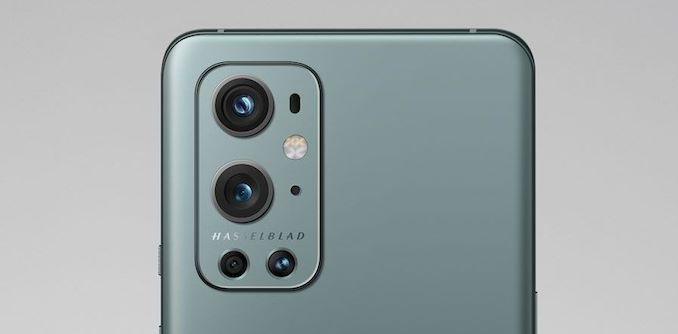




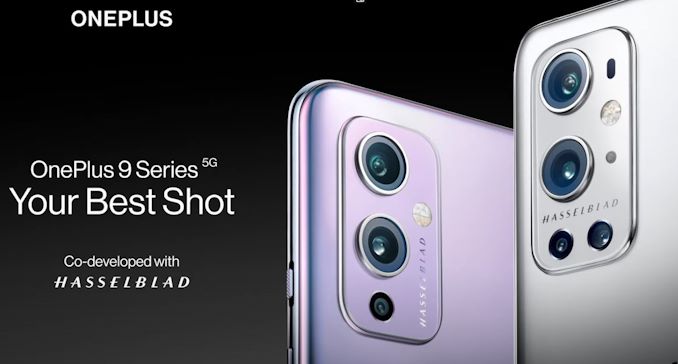
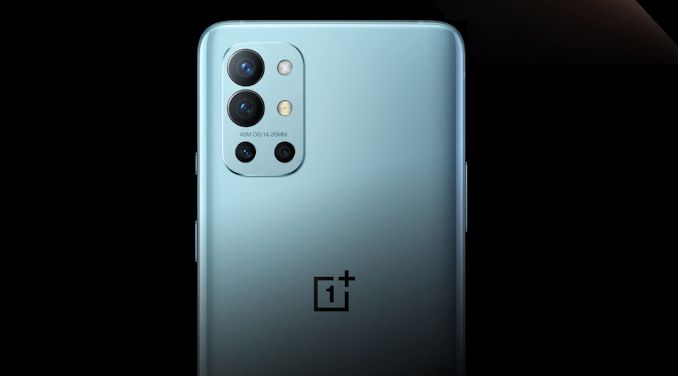
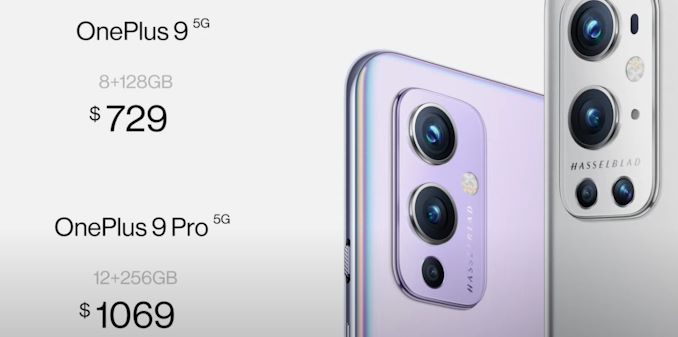
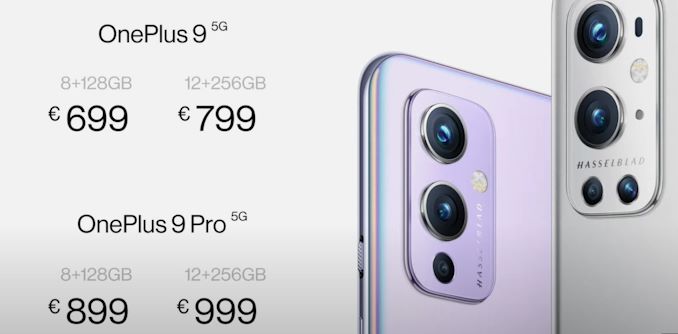








58 Comments
View All Comments
abufrejoval - Tuesday, March 23, 2021 - link
There are almost monthly betas of Android 11 on the OnePlus 7. And that has been going on for more than half a year.So clearly their focus is on making sure that *functionally* the update is as near perfect as it can be.
The *security* aspect of continously closing the latest vulnerabilities is an entirely different story and priority.
I don't like it either, but the only alternative is to go LineageOS directly.
Increasingly that seems to mean that you sacrifice the camera and perhaps some of the other "goodies" like neural processing. If that puts a wrench into some of the "social media processing" I don't want, I'd consider it a feature, but the camera... Once you've gotten used to getting silly quality from total lack of talent, it's a bit hard to go back to something distinctly "manual".
And then even LineageOS doesn't solve the issue of outdated kernels and firmware for WIFI and modem enclaves...
Today I tend to get high-end phones just before they are discontinued at maximum clear-out discounts. That's when the value is ok and I know if a device will find the favor of LineageOS. The mid range tends to offer similar basic value, but falls short on LineageOS support and thus longevity.
iphonebestgamephone - Tuesday, March 23, 2021 - link
The open beta for oos11 only started in january. Now the 7t series received stable 11. Users reporting some camera problems.calc76 - Tuesday, March 23, 2021 - link
So the OnePlus 9 Pro 5G is roughly the same price ($1069 vs $1099) in the US as an iPhone 12 Pro Max but with only 2/3yr support compared to the 5/7yr support of the iPhone. So both amortized cost per year and resale value is much worse than the iPhone, making it effectively twice as expensive. 🤦SR-71 - Tuesday, March 23, 2021 - link
That is correct. ;)5080 - Tuesday, March 23, 2021 - link
Not being locked into the walled garden of Apple can't be measured with money.Sharma_Ji - Wednesday, March 24, 2021 - link
AbsolutelySilver5urfer - Wednesday, March 24, 2021 - link
Yes, I agree. But with Android it's nothing great. Android 12 looks like iOS. They made the filesystem castrated completely now, it basically cannot create folders, even if you create with root. No app will use. Using any App now creates sandboxed filesystem but you have to copy those, note - SAF is mandatory, so the performance hit happens (Dolphin Emulator developers mentioned that it has to be regressed since the folder structure is not supported, so the emu is having reduced featureset) and next all the files in the app folders have to be manually copied (any application from Photoshop, EXIF editors, Movie editors, Recording apps, Database sql files, songs, pics, movies everything, then Filemanagers have to be specifically approved in a seperate GPlay form)So yeah, basically the iPixel is fucked so bad that even with Superuser access, the Filesystem is readonly, so you cannot edit them easily, the TWRP needs a ton of work, the A/B slotting, Root and Boot partitions changed on top. Next is you don't even have MicroSD card in any flagship phone except Sony, maybe Motorola now, both have BL unlock but with Moto SW updates are bad in the sense of security updates, since OS updates are more of a downgrade like Win10.
Next up price, the cost is insanely high, resale value is piss poor, servicing is complete garbage, ubreakifix and bestbuy for iPixel and Samdung, rest you are having to ship to them essentially leaving you without a phone, battery repair after 2 years is hard since you have to backup everything without SD card, then you have shitty build quality like this OnePlus 9 with plastic frame vs iPhone's Stainless Steel, then you have Samsung S21 with plastic back.
Next is the Android apps are virtually locked down by Google, all the Phone / SMS and other basic apps need updates, plus you cannot have alternative as the radio baseband might be effected. So meaning all the Google apps are as a Service and if you lose Internet access for a long time expect bugs, then all the data is siphoned for free by Google. No restrictions or anything.
yeah now tell me which is measurable, an Apple ecosystem for $1000 vs that inferior Apple copying and fanatic braindead Goolag ? Using Android since Eclair with Bootloader unlock here, now on Oreo with BL unlocked device with MicroSD and an ESS DAC phone.
Android is garbage, after 10 it became pathetic. Samsung also shamelessly copying Apple is even rubbish. You don't even have ecosystem advantages, like Watch / iPad integration. It's all bogged down garbage for Android. A shame how Google is killing it.
Sharma_Ji - Wednesday, March 24, 2021 - link
While in india, 1+9 pro is absolutely half the price of 12Pro Max, so usa guys please buy your fruit phone.Let us asians enjoy our 1+.
Cool.
calc76 - Wednesday, March 24, 2021 - link
@Sharma_Ji that's partly due to OnePlus jacking up their pricing in the US to match Apple pricing without matching their level of support.On top of that India has huge import tariffs on Apple products (ie iPhone 12 Pro Max at $1099 in US is ~ $1790 in India) which has been in the news. That's why Apple has started building iPhones in India directly to at least partially bypass the tariffs.
The OnePlus 9 Pro 12/256 is ~ $100 cheaper in India than the US.
The OnePlus 9R 8/128 which is sold for the equivalent to ~ $550 USD isn't even offered in the US at all.
There are other cheaper Android flagships, outside the US, but they never include US LTE bands so are unusable in the US.
Eri Hyva - Tuesday, March 23, 2021 - link
Oneplus 9 Pro wireless charging is 50W, not 30W like state in the article.